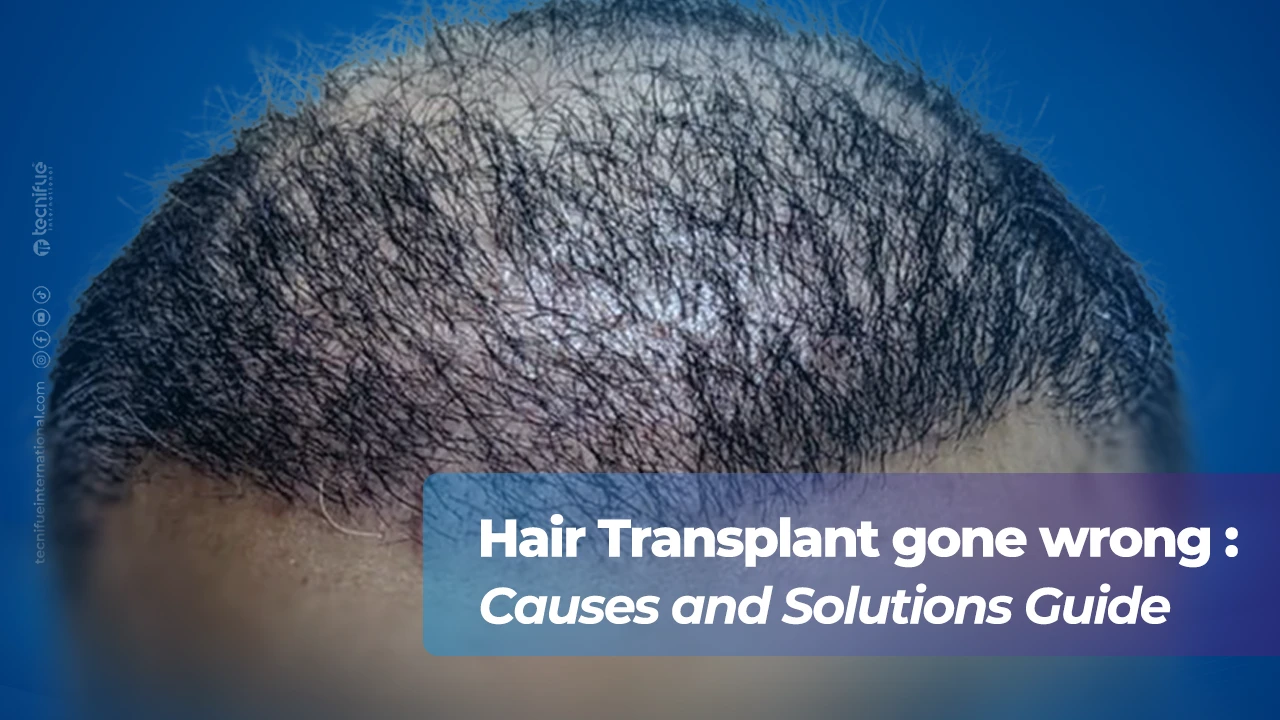If you’re curious about the causes and solutions for a hair transplant gone wrong, you’ve come to one of the most comprehensive expert guides on this sensitive topic.
I hope some of you are here out of curiosity.
However, from my experience, I know that most of you are researching this because you’re dealing with a hair transplant that hasn’t gone as planned.
Or you’re worried that it might have failed.
If you’re part of this unfortunate group, let me first express my sincere empathy.
From personal experience, I understand how important hair is.
I was fortunate to have had a successful hair transplant myself, and since 2012, I’ve helped many patients as an expert in this field.
It’s an amazing feeling to regain your hair after a transplant.
I can attest to this from my experience and the many patients we’ve helped at our hair transplant clinic in Istanbul, Turkey.
I also know how devastating it can be for those who’ve had unsuccessful transplants at other clinics and come to us for corrective surgeries.
I understand your situation and what you might be going through.
In this article, I will explain the potential causes of a hair transplant gone wrong and your options for correcting it.
Before we dive in, let me briefly introduce myself.
I’m James, and I co-founded one of Turkey’s premium hair transplant clinics in Istanbul.
Since 2012, we’ve been helping patients from around the world, and I’ve personally guided many on their hair transplant journeys.
So, I have some experience and credibility regarding hair transplant surgeries.
My goal is to educate and empower patients to understand hair restoration from all relevant angles.
Well-informed patients make better decisions, which ultimately benefits everyone.
Now that you know what to expect from this article and who I am, let’s dive in.

What’s the cause of a hair transplant gone wrong?
When looking at the causes of a hair transplant gone wrong,
I’ve decided to divide this subject into two subcategories.
The first category concerns the transplanted hairs not growing, and the second category concerns an unnatural look.
Let’s take off the possible causes of the transplanted hair not growing.
No Hair Growth has two leading causes.
Cause 1: No Hair Growth After Necrosis or Infections
These two definitions are often considered the same, but they are not identical in hair transplantation.
Let me explain.
An infection after a hair transplant can happen due to bad hygiene during the hair transplant, but improper follow-up after the hair transplant can also lead to an infection.
Necrosis in Hair restoration can be caused by an infection or excessive blood vessel tissue damage during the channel opening phase of a hair transplant.
Let me explain in more simple terms.
An infection can lead to necrosis but is not the cause per definition.
I always find it valuable to clarify this topic.
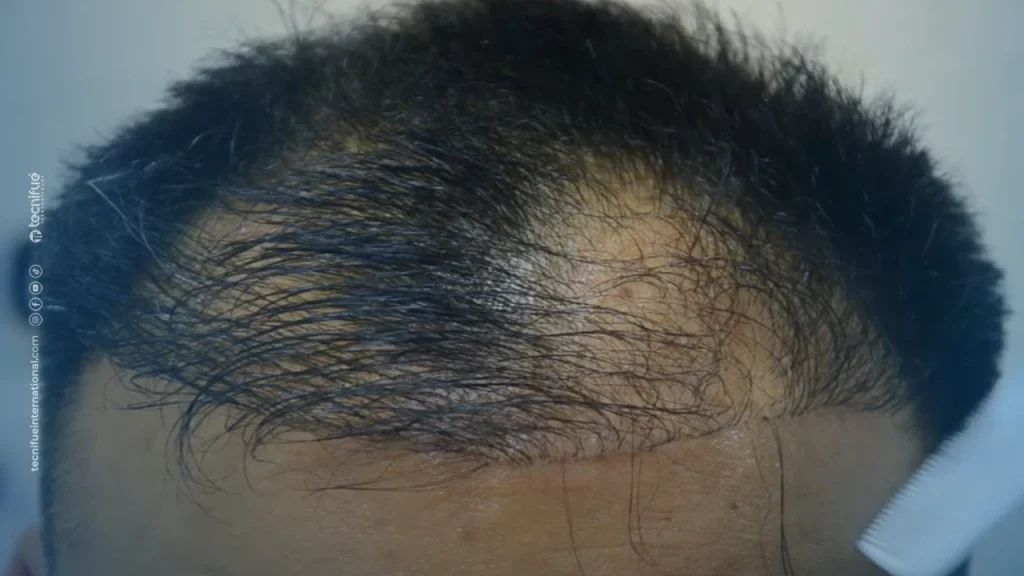
Let’s get back to our topic.
If the transplanted areas have suffered from an infection, the skin tissue is not in an optimal state to support the newly transplanted hairs in their survival and, ultimately, growth.
You’ll generally see, and this will depend on the severity of the infections, that the hairs at transplanted zones grow weak and lack strength.
Many experts, including me and our Medical team, believe the infection is to blame for some hairs not growing at all.
Now, the case of necrosis is a bit different here.
The blood supply to the transplanted hairs is cut off since we are dealing with dying skin tissue.
This means the follicles don’t get any nutrition and, therefore, don’t survive.
This results in those zones affected by the necrosis not showing any hair growth.
Necrosis is one of the biggest nightmares of both a clinic and the patient.
The patient and Medical team must detect possible necrosis as soon as possible, and adequate treatment protocols must be implemented to control the necrosis and stimulate healing.
Necrosis is not necessarily the cause of the Medical team or the patient; it can be related to the patient’s unique situation.
It’s essential to stay calm.
This goes for both parties who need to stay focussed on healing the situation.
There are very few clinics that will openly share any necrosis cases.
This is understandable, yet a risk of necrosis is mentioned in every consent form for a hair transplant procedure.
We take all necessary measures during the hair restoration procedure and follow-up to avoid and minimize the risk of necrosis.
And knock wood; we’ve had one minor case of necrosis and one patient whose situation was a bit more worrying.
I’ve promised to be transparent in our content and share all I know to help you understand the topics that I cover.
So, I’ve decided to share the more severe case of necrosis with you and how we managed to save the hair through adequate follow-up.
It was no easy task and, quite frankly, quite stressful for us as well.
But this is where having great people on board makes all the difference.
See how the case started evolving and the hair transplant’s final result.
The case study part of this article shows the complete process of necrosis evolution and the final outcome.
I prefer to keep a logical order in my articles.
Our current topic of discussion is the causes of a hair transplant gone wrong.
Let’s continue with the next cause of a hair transplant gone wrong.
By the way, if you want some more interesting reading on the risk of necrosis per method, I can recommend one of my other articles: ‘DHI vs. FUE Hair Transplant: Complete Expert Guide”
Let’s dive into the next cause of an unsuccessful Hair Transplant.
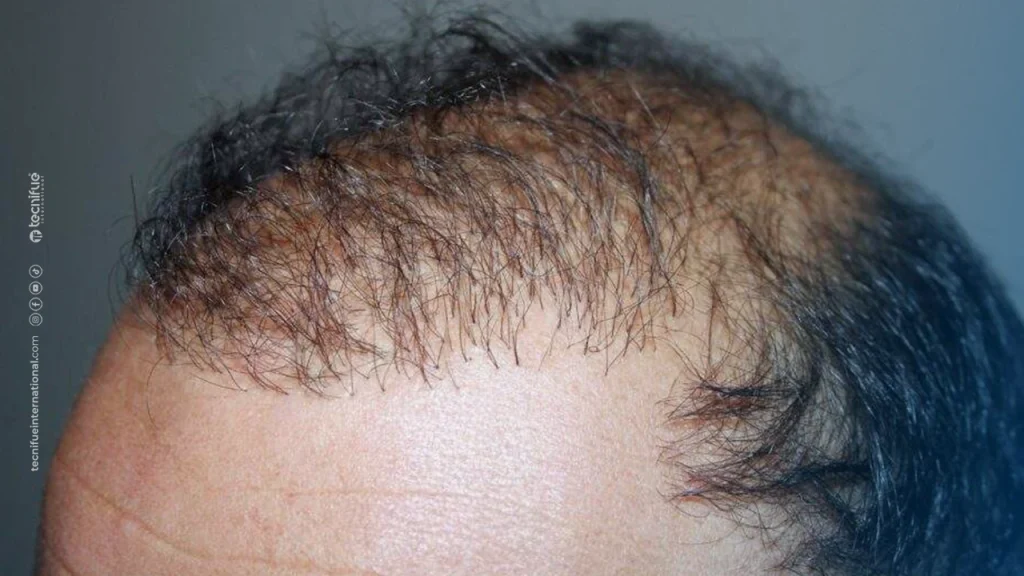
Cause 2: No Hair Growth Due to Graft Damage
Another reason a hair transplant can go wrong is graft damage during extraction or implantation.
Let’s break this down so it’s clear.
A graft is fragile and can be easily damaged if not handled properly.
Graft damage can occur during extraction when the grafts are cut loose from the skin using the extraction tool.
Graft damage can also occur when the grafts are pulled out from the donor area with forceps.
The third moment when graft damage can occur is during implantation.
Damage can occur due to improper channel opening or mishandling during the implantation of the grafts.
I’ve explained the details of extraction, channel opening, and implantation more extensively in our “FUE Hair Transplant: Cost, Procedure, and Benefits Explained” blog article.
If you’d like to dive deeper into this subject, I highly recommend you check out that blog.
Now, you have at least a basic understanding of when grafts can be damaged.
The next logical question is how damaged grafts can lead to a hair transplant gone wrong.
Well, damaged grafts will either grow very weak or not grow at all.
The damage might cause the graft not to survive, or if it does survive, it will produce very weak hairs.
I’ve already covered the situation where there is no hair growth at all after a hair transplant and what the causes might be.
Next, we’ll explore hair transplants that have gone wrong because of their unnatural appearance.
I’ll explain why these results look unnatural and are considered failed hair transplants.
Hair Transplant Gone Wrong Due to an Unnatural Look
An unnatural appearance after a hair transplant is often considered by many as a sign that the procedure has gone wrong.
I agree with this.
A hair transplant should look natural.
I’ve covered this in detail in our “Hair Transplant Before and After Guide” blog article.
This article provides detailed visual references on what a good and natural hair transplant should look like.
It’s definitely one of my favorite articles, and I highly recommend it to anyone considering a hair transplant, especially if they’re considering a second procedure.
I’m aware that the next section might have a subjective element.
Let me explain what I mean by that.
If the transplanted hair doesn’t grow, it’s a clear sign that the hair transplant has failed.
However, determining whether the result looks natural or unnatural can be more subjective.
What I might find unnatural, someone else might find natural, and vice versa.
However, I ask you to consider my perspective, as I’ve been active in hair restoration for years and am recognized as an expert in this field.
However, it was necessary to mention this, as not acknowledging the subjective nature of this topic could lead to misunderstanding or criticism of my views on what constitutes a natural hair transplant.
I think my point is clear.
Before we get too philosophical, let’s dive into the first reason why a hair transplant might look unnatural and be considered unsuccessful.
Unnatural Hairline Design
An unnatural hairline design is one of the critical indicators of a failed hair transplant.
Just as a natural hairline speaks for itself, so does an unnatural one.
If the hairline looks unnatural and doesn’t blend in with your original hair, you can consider the hair transplant gone wrong.
Unnatural Channel Opening Pattern
This is another reason a hair transplant might look unnatural and be considered unsuccessful.
One clear example is when channels are opened in a line formation.
If you look closely at anyone’s hair, you’ll notice that hair doesn’t grow in straight lines.
This looks very unnatural and can certainly be considered a hair transplant gone wrong.
Wrong Angle and Direction of Channel Opening
This cause of a hair transplant going wrong has two aspects: the angle and the direction of the channels opened.
The angle isn’t a big issue when the patient has no existing hair, but the situation changes when there is existing hair.
Transplanted hair must blend in with the existing hair for a natural result.
The hair transplant surgeon ensures this by determining the existing hair growth angle and patterns.
Wrong Graft Allocation Plan
Another reason a hair transplant can go wrong and look unnatural is due to a poor graft allocation plan.
Let me explain.
A graft allocation plan is where the surgeon decides how many grafts to allocate to each zone that needs treatment.
A common mistake we see is that some clinics implant too many grafts in the frontal region by default without carefully studying the hair loss pattern and existing hair patterns.
As a clinic, one of our biggest challenges is using the grafts as best as possible.
We often deal with cases where 6,000 grafts or more are needed, sometimes 1,000-1,500 grafts short of the most optimal graft allocation plan.
A strategic allocation of grafts is critical for the best long-term results.
If this isn’t done correctly and the focus is on one zone only while neglecting other areas that need attention, it can lead to unnatural hair patterns and be marked as a hair transplant gone wrong.
Lack of Density
Lack of density is another reason a hair transplant might look unnatural, and some might consider the outcome unsuccessful.
This issue can stem from a poor graft allocation plan.
If too few grafts are placed where more is needed, it produces a thin hair appearance.
Another reason could be the surgeon’s expertise in opening the channels.
Let me explain.
Fewer channels opened per zone mean fewer grafts and fewer grafts lead to lower density.
Good density is considered one of the key characteristics of a natural and successful hair transplant result.
So, lack of density is often cited as a reason to consider a hair transplant as having gone wrong.
Now, let’s move on to the final two causes of what can lead to a hair transplant going wrong before I share the possible solutions.
Improper Follow-Up of Aftercare Instructions
It shouldn’t come as a surprise that a hair transplant requires detailed post-op instructions.
The first few days, until the scabs are removed during washing, are the most critical period for follow-up.
One of the main reasons a hair transplant can go wrong during this period is not following the given post-op instructions as communicated.
This isn’t always due to bad intentions. Some patients accidentally bump their heads and lose grafts.
Poor hygiene, leading to infection, is another cause for a hair transplant to fail.
In the 12 years I’ve been active in hair restoration, I’ve only had one patient whose hair transplant failed due to poor follow-up.
In the first few days after his hair transplant, this patient stayed in the sun for many hours, resulting in a scalp infection.
He had to return the following year for a correction of the infected zone.
Thankfully, we corrected it entirely so he could enjoy his hair, but neglecting the aftercare instructions was not wise.
Let’s wrap up this section with the final cause.
Mismatch of Expectations and Results
This might come as a surprise, but a mismatch between expectations and results is one of the biggest reasons a hair transplant is considered unsuccessful.
Let me explain.
This issue is rooted in setting the right expectations for hair transplant surgery.
As an expert, I believe that the hair transplant clinics, not the patient, have the primary responsibility.
The clinic’s representative, whether a doctor or a medical consultant—is the expert in this field and should be able to identify patients with unrealistic expectations.
If a patient has unrealistic expectations, the first step should be to educate the patient about what is realistically achievable and explain why.
If the patient insists on maintaining those unrealistic expectations, there is only one real option: the clinic should not accept the patient.
Another important point related to this topic is ensuring that the patient is fully informed about how the procedure went.
We call this a patient debrief.
No matter how clear and thorough a consultation you have with a patient, certain factors only become evident during the procedure.
Graft quality is one of these factors, and it can sometimes be disappointing.
Informing the patient about the challenges faced during the surgery lays the groundwork for managing expectations or adjusting them based on the new information.
I have always been a strong advocate for honesty, both in our consultations and in our debriefings.
This approach has sometimes led to patients choosing not to go with our clinic because we didn’t tell them what they wanted to hear.
Unfortunately, some learned the hard way that our findings were accurate.
However, our commitment to honesty and transparency has helped us build a patient portfolio of like-minded individuals who appreciate this approach.
While I believe the clinic has the main responsibility for managing expectations to prevent long-term issues between the clinic and the patient, the clinic does not have all the responsibility in this regard.
The patient is also responsible for doing the necessary research.
This isn’t just about whether the clinic is reputable; it goes beyond that.
As a patient, you should do at least some research on the methods and the latest trends in the field.
You should consult more than one source.
As confident as I am in our expertise, I always encourage any patient who contacts us to verify what we say or claim.
The point I’m trying to make is that you are responsible for your choices, so it’s essential to put effort into doing your research and have some solid knowledge as your foundation.
You can’t just assume that everyone claiming to be the best is the best.
We don’t live in a world where you can take everyone at their word.
You get the point—do your due diligence!
Let’s continue with your options if you have experienced a hair transplant gone wrong.
What Are the Possible Solutions for a Hair Transplant Gone Wrong?
Before considering a second hair transplant or any kind of solution, it’s crucial to thoroughly analyze the results of your initial procedure.
You can ask the clinic where you had your first transplant to provide an analysis of your hair transplant outcome and their thoughts on a possible correction treatment.
Alternatively, you might want to contact a few other clinics to get their opinions.
You could think of this as getting a second opinion.
Regardless of the feedback you receive, it’s important to understand your situation.
The first factor to consider is how severe the hair transplant issue is.
Next, you’ll need to determine if the damage can be corrected.
Finally, you must ensure that you still have sufficient donor hair for a successful correction of the hair transplant that went wrong.
Let’s look at your options if your condition is favorable for another hair transplant.
Second Hair Transplant
Your first option for correcting a failed hair transplant is the most obvious one: having a second hair transplant.
As mentioned, you must have enough donor hair for a second procedure.
You can also do a basic assessment yourself.
Take pictures of your donor area and study them to see if you still have enough hair grafts available for another transplant.
You can also check this by touching the donor area to feel how full and thick it is.
This topic has many more details, but since they are specific to each individual, going into them here might make this blog too technical.
If you think you’ve had a bad transplant or are concerned about your results, I recommend reaching out to have your situation analyzed by one of our experts.
SMP (Scalp Micropigmentation)
Another option is an SMP treatment.
If you’re unfamiliar with SMP, let me explain briefly.
SMP involves tattooing small dots on your scalp to create the appearance of hair.
SMP isn’t actual hair, so it has limitations compared to hair transplants.
However, it can be a very effective solution for certain hair transplant results, especially those lacking density.
The SMP dots will darken the scalp, where the hair looks thin, making it appear fuller.
While it’s not as effective as a hair transplant, SMP can be a good alternative if you don’t have enough donor hair for a second transplant.
Hair Transplant and SMP Combo Treatment
The final option you might consider is a combination of a hair transplant and SMP treatment.
We refer to this as a combo treatment.
Let me explain with an example.
Suppose you’ve had your first transplant but aren’t completely satisfied with the results.
Your hairline could be more natural but also lack density.
Additionally, your crown area is still on the thin side.
Your donor area allows for the extraction of another 2,500 grafts.
However, correcting your front hairline requires 2,250 grafts, and your crown needs 1,000 grafts.
This means you’re 750 grafts short.
In such a case, I would advise allocating 2,250 grafts to the front hairline and 250 grafts to the crown.
Then, I’d recommend waiting about eight months before having an SMP procedure done on the crown area.
This example illustrates how a hair transplant and SMP treatment can work together.
We’ve covered a lot of important information.
Next, I’ll focus on two case studies from our clinic.
The first case study involves a hair transplant correction for a patient who had their first procedure done at another clinic.
The second case is about a patient who suffered from necrosis and how we helped him through that period, managing to save all the grafts and achieve a successful outcome.
Case Study Hair Transplant Correction
For our case study of a hair transplant correction, I’ve selected a typical example covering two issues.
The case study focuses on two significant issues: an unnatural hairline and a lack of density.
Let’s look at the situation and discover together what we did for this patient.
We opted for a DHI no-shave procedure in this situation.
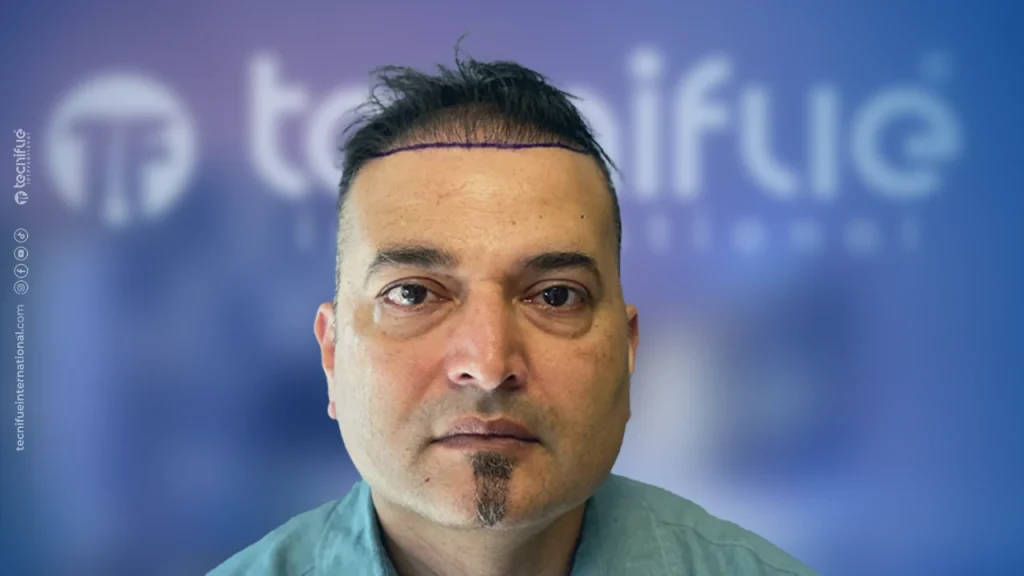
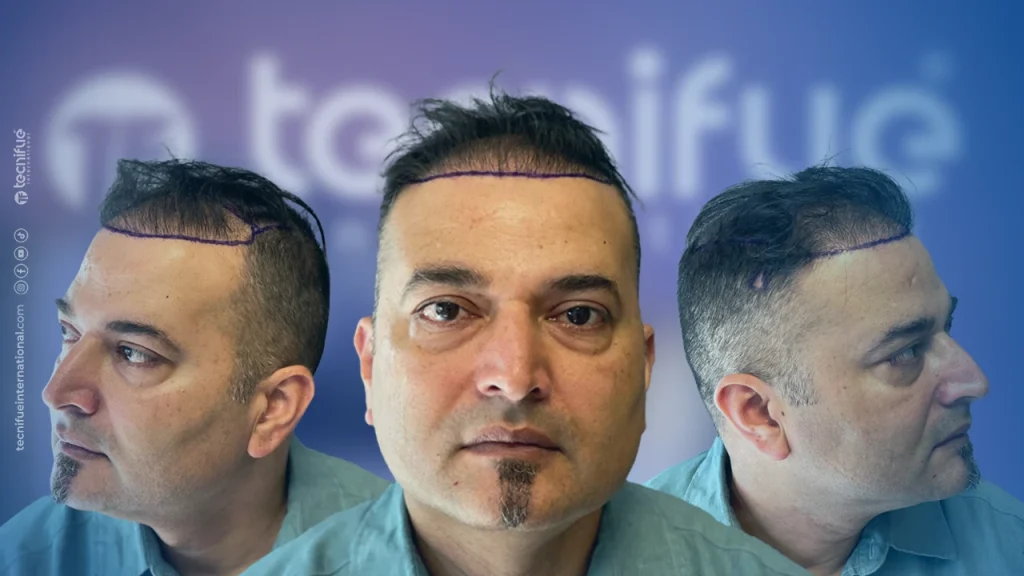
We’re dealing with an unnatural hairline design here.
The line we drew was just a reference.
We had limited options for designing a new hairline because the existing one was already very low.
Our only option was to densify the hairline and implant single hair grafts in the first two rows to make it look more natural.
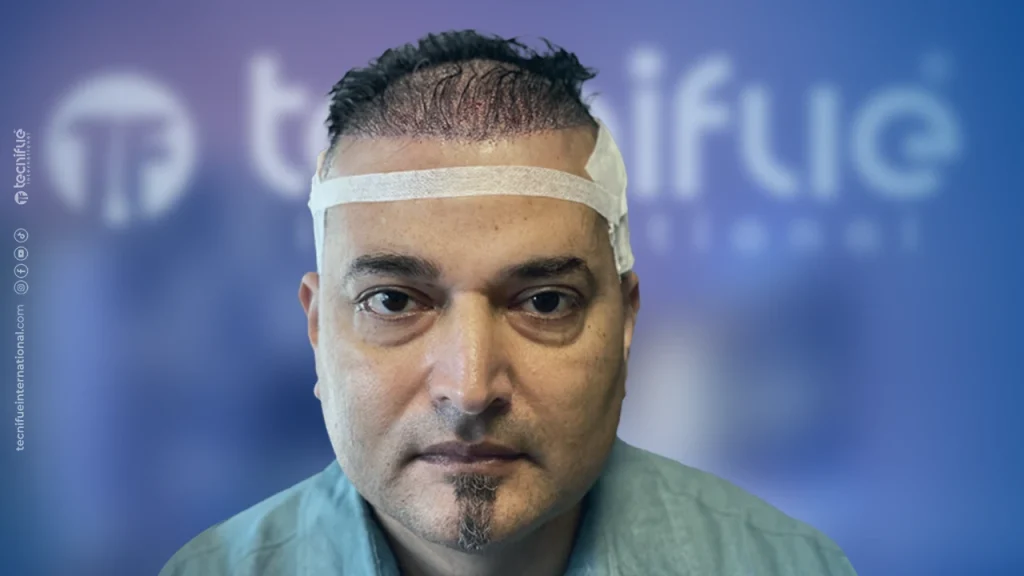
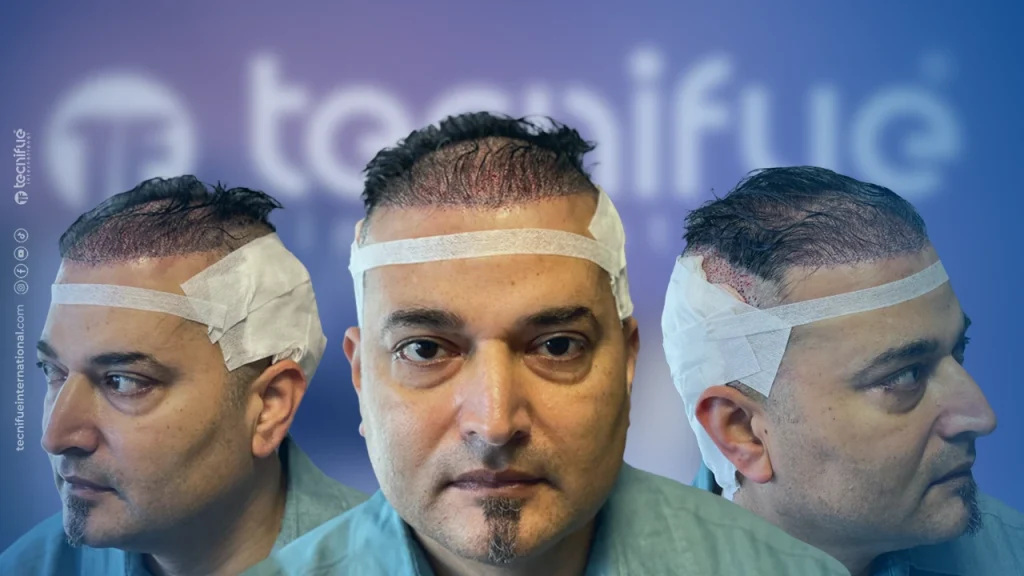
As you can see from the pictures after the surgery, we added hair grafts to the front hairline and densified the whole frontal region.
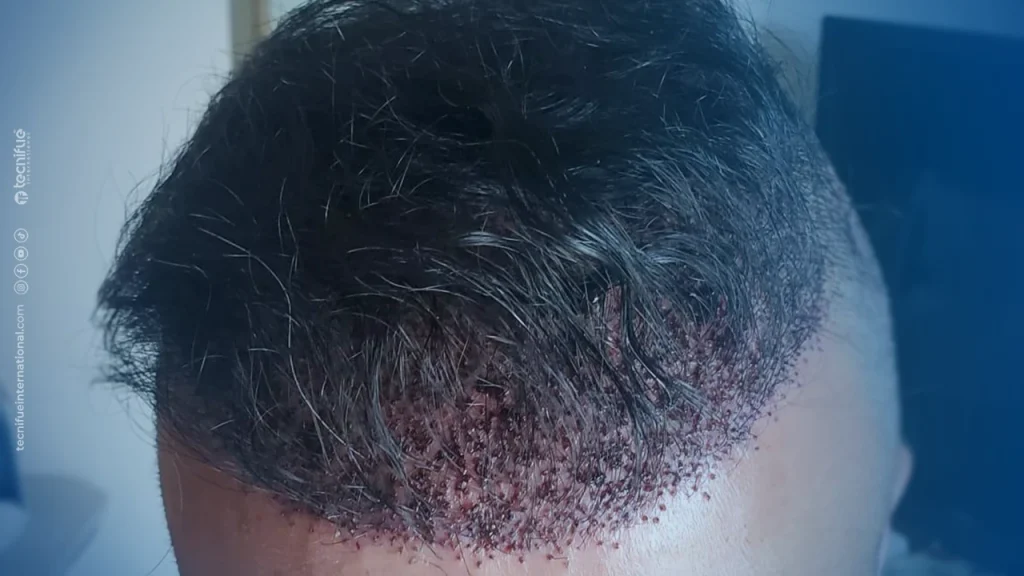
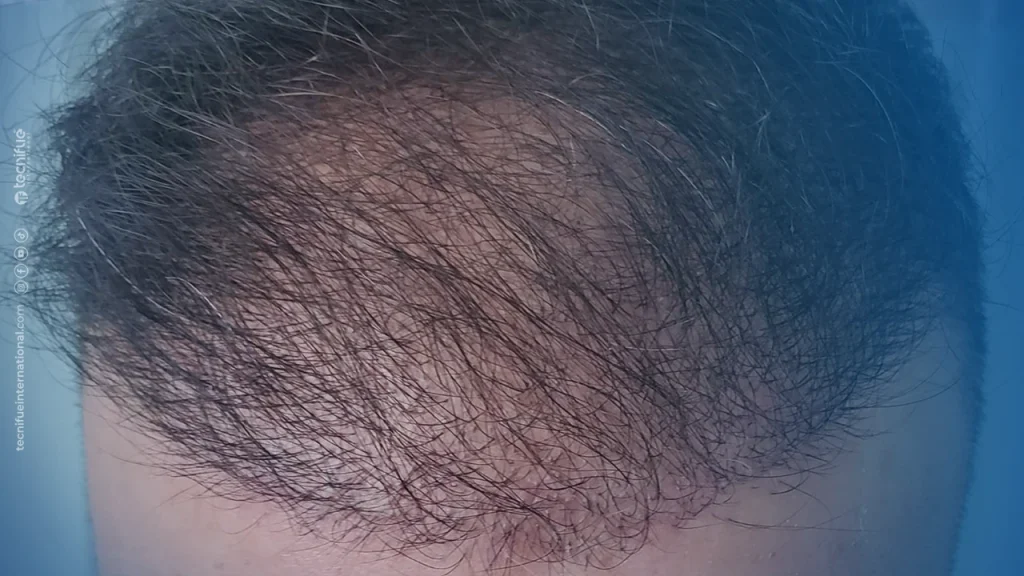
As you can see from the pictures above, the first hair transplant’s density was quite low.
You can also see how well it healed eight days after the surgery.
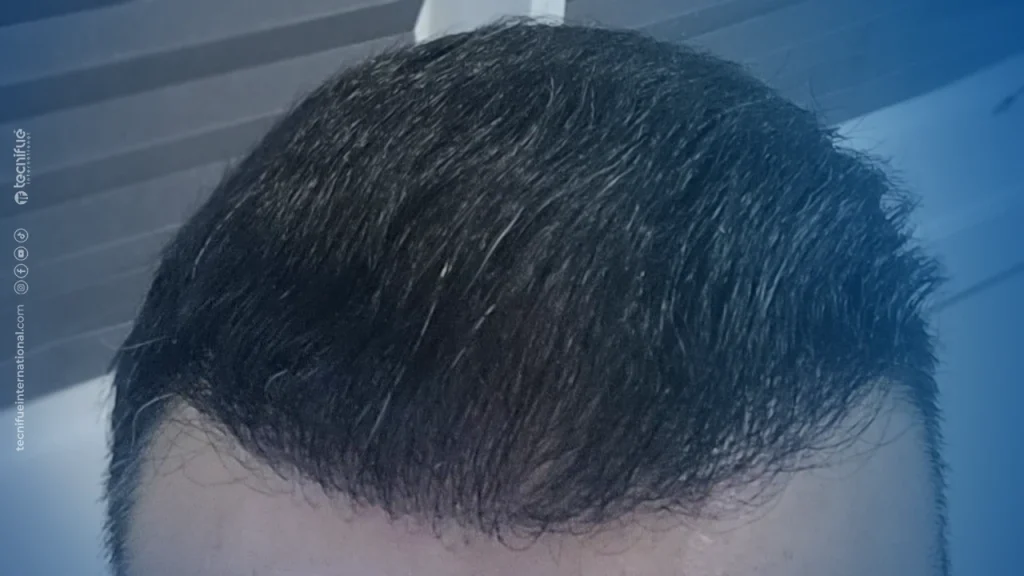
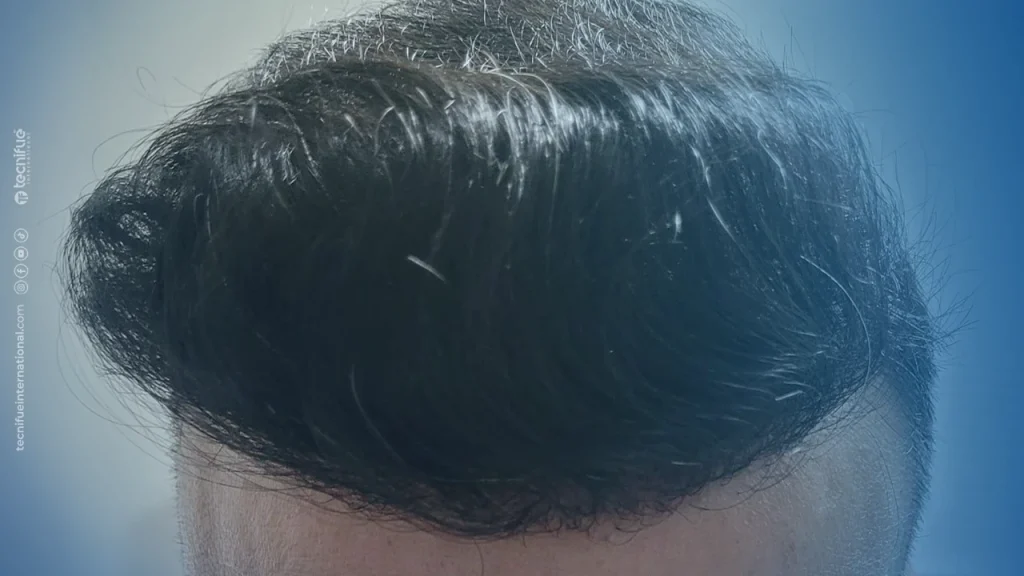
As you can see, the correction has been very successful.
The frontal zone now has a high volume, and our patient is satisfied and grateful for the outcome.
His case is one we encounter often in hair transplant correction surgeries. Correction treatments are more challenging for the clinic involved.
We understand that we’re dealing with a patient who has already been traumatized to some extent and that this might be their last chance for a successful outcome.
Good and clear communication is essential in helping such patients.
The options can be positive if the patient still has a workable donor area with enough grafts.
However, each correction case must be carefully studied as they all have their unique dynamics.
The case provides a good example that even seriously failed transplants can be restored with great success if done correctly.
Case Study Hair Transplant Necrosis
Please pay close attention to the critical notes I’m about to share before you view the necrosis case and consider it a reference for your situation.
Necrosis is a complex issue in hair restoration that requires careful attention.
The initial focus should be on managing and controlling the necrosis to prevent it from worsening.
Once the necrosis is under control, the next step is to minimize damage to the grafts and, if possible, save them.
This case is unique and should not be considered a standard.
I also won’t be sharing any specific protocols for managing necrosis.
If you’re experiencing necrosis, you should really consult the medical provider where you had the surgery to get help managing it.
We managed to save all the grafts in this case, but it required significant attention and care.
Please use this case as a visual reference to understand how necrosis can develop and that it might be possible to save the grafts, even in the presence of necrosis.
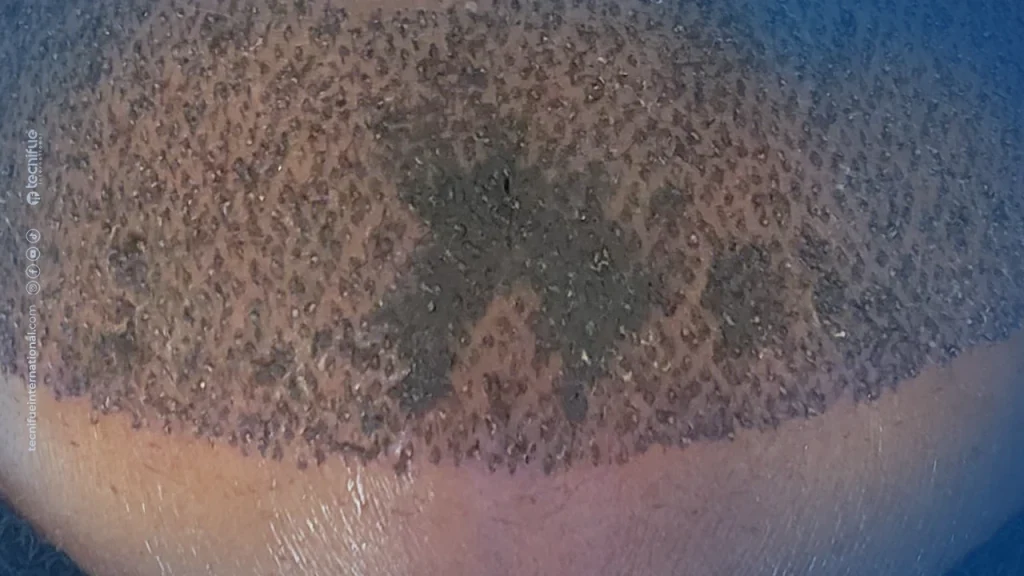
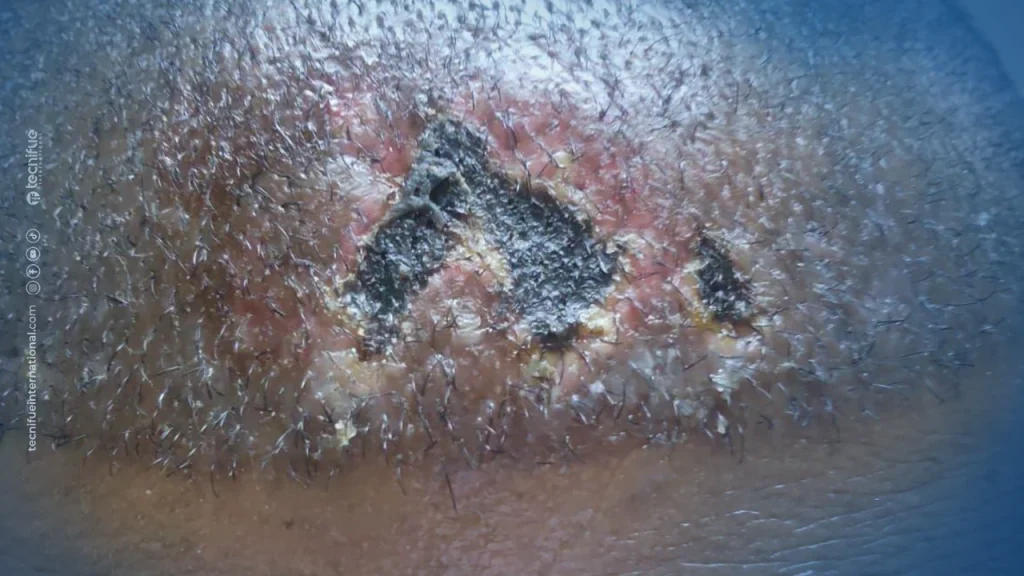
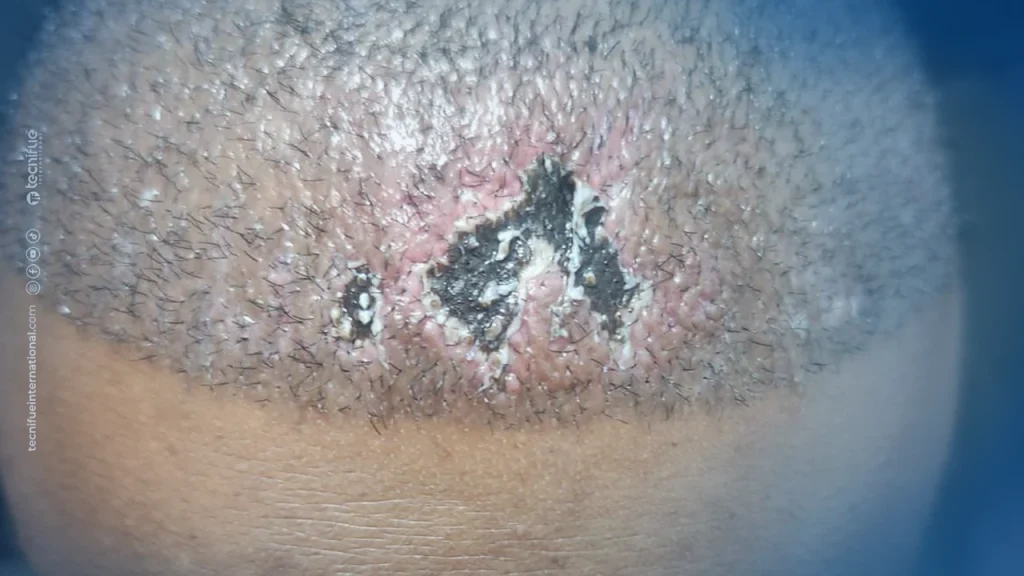
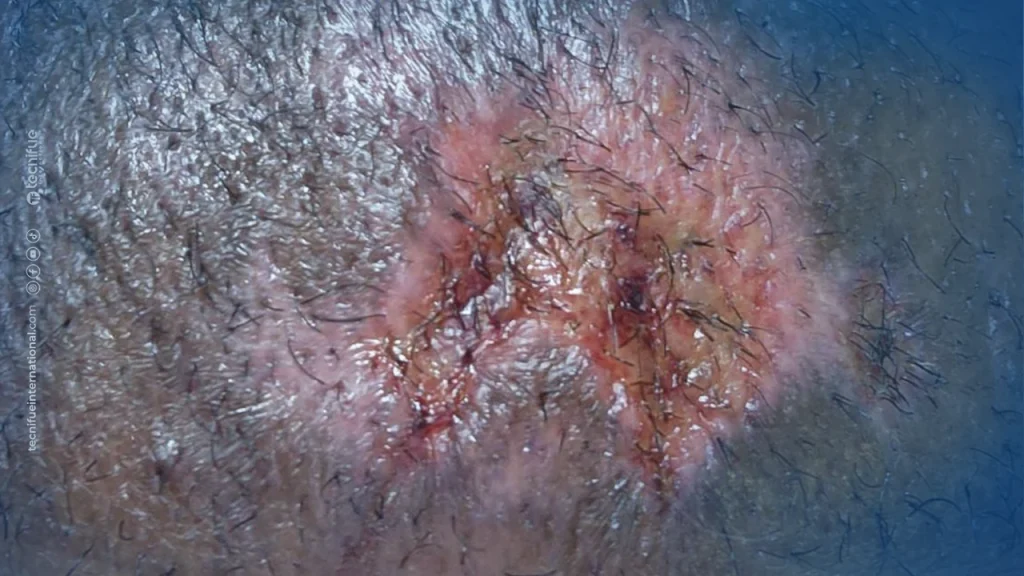
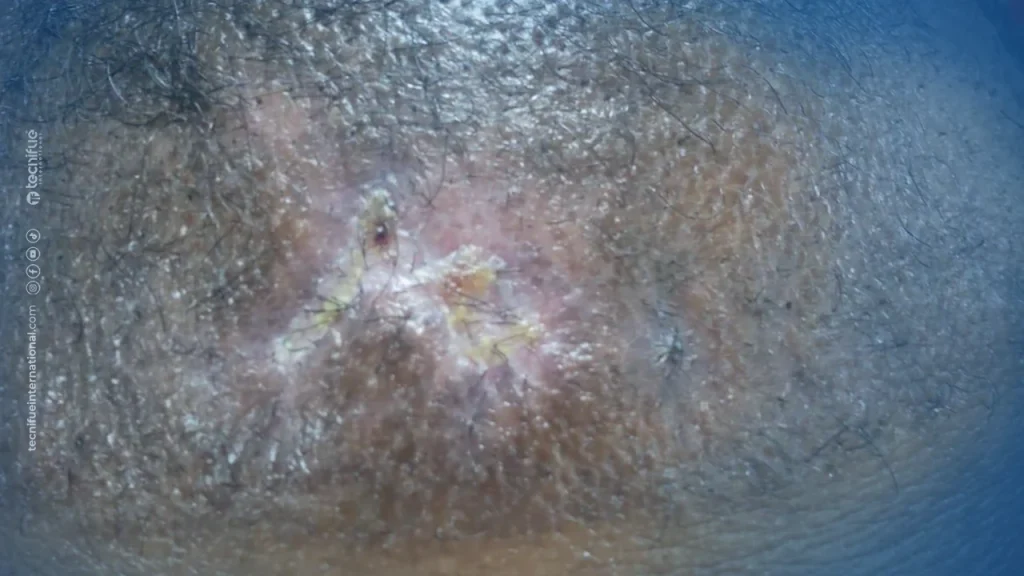
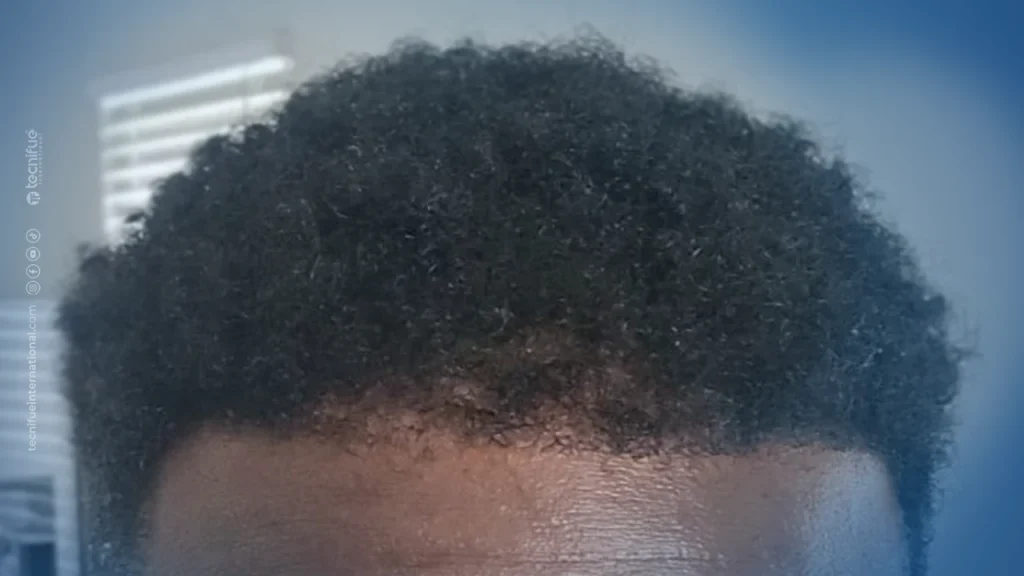
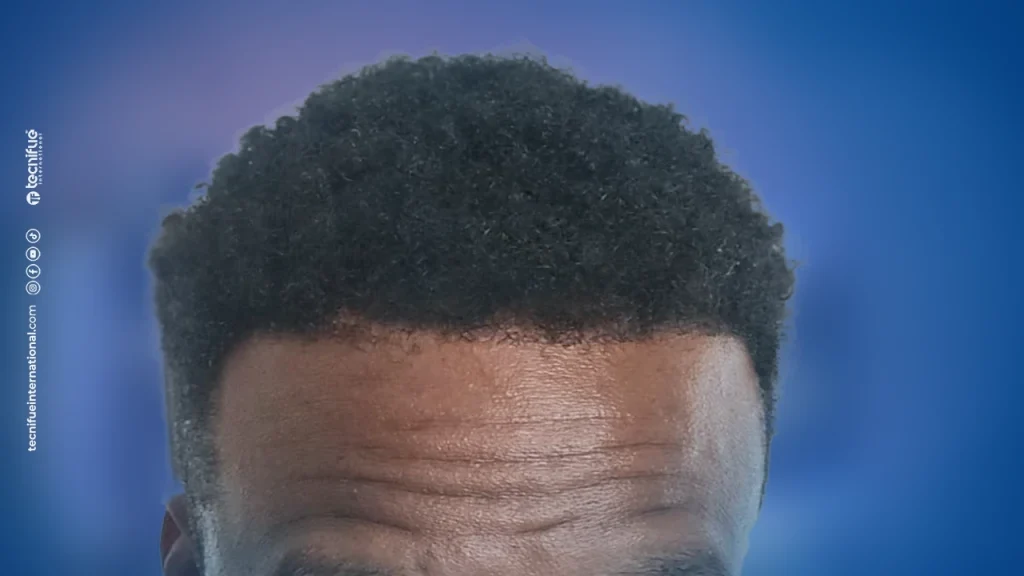
Final Word
If you’ve made it this far through this extensive guide, this topic must be important to you.
As an expert in this field, I’d like to share some personal thoughts in my final words.
I’m aware that not all hair transplants turn out as successfully as hoped.
Our work isn’t an exact science, and we’re working with unique individuals who each bring their dynamics.
This fact alone presents challenges.
We can’t control some aspects, even with our best intentions and efforts.
However, one thing we can control is managing expectations correctly.
Many hair transplant clinics could improve in this area.
This includes educating patients on a broad range of hair transplant topics and, more importantly, helping patients understand how to assess their options.
At our clinic, we’ve developed tools to manage expectations, which have served us and our patients well.
I’ve said this often, but it’s worth repeating: do your research.
Our website is a great resource, where I’ve covered nearly everything I know in the same format I’ve used throughout this blog.
Good luck if you’re dealing with a hair transplant that didn’t go as planned.
Hair Transplant Consultation or Second Opinion
If you believe your hair transplant went wrong, feel free to contact us.
Our experts will study your situation and share your options for a second hair transplant.
If you haven’t had a hair transplant yet and would like to know your options, reach out for a complimentary consultation.
Our experts will analyze your hair situation and provide feedback on your options with us.
FAQ
I’ve addressed some of the most frequently asked questions about hair transplants that haven’t turned out as expected.
How common are failed hair transplants?
When we talk about failure from a technical standpoint, meaning the hair doesn’t grow, the percentage is unknown since there are no official statistics.
However, as an expert, I consider 40-50 % of hair transplant results to be failures from an aesthetic point of view.
This high percentage underscores the importance of thoroughly researching a clinic and reviewing its hair transplant before-and-after results.
Do people ever regret getting a hair transplant?
Yes, many people do regret getting a hair transplant.
In some cases, this involves individuals who were not good candidates for the procedure, meaning their outcome was unlikely to be positive.
These patients should not have undergone a hair transplant in the first place.
Others may be unhappy with their results and regret their decision to have the procedure.
Do hair transplants ever go wrong?
Yes, hair transplants can and do go wrong.
As with any cosmetic procedure, there’s always a risk of things not turning out as expected.
This article has covered all the possible reasons for this extensively.
How can a failed hair transplant be fixed?
First, it’s essential to assess the donor area’s condition to ensure enough donor hair is left for a corrective procedure.
A patient can opt for a second hair transplant to fix a failed one.
Scalp Micropigmentation (SMP) might also be an excellent alternative solution.
Combining a hair transplant and SMP can be an effective option for correcting a failed transplant.
What happens if your hair transplant fails?
The worst-case scenario when a hair transplant fails is that the transplanted hair doesn’t grow.
Another undesirable outcome is that the hair grows weakly, resulting in an unnatural appearance.
So, an unnatural result is a common consequence of a failed hair transplant.
Why didn’t my hair grow after a hair transplant?
The reason your hair didn’t grow after a transplant could be due to damaged hair grafts.
Another possibility is scalp necrosis, which can cause the hair follicles to die off and not grow.
